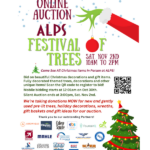Getting featured on local news or by a targeted social media influencer is a fantastic, low or no cost way to promote your small business. Before you can tap into these free publicity sources, though, you’ll need to be able to provide media with the content they need—a press kit. A press kit or media kit is a one- to-two-page document that features key information and resources about your small business. The specific contents of each media kit will differ depending on what you’re trying to promote about your small business. Below, we detail what to consider and include when creating your small business’s media kit.
Why Does Your Small Business Need a Media Kit?
Because both you and your media contacts are strapped for time. Before creating a blog post or a local news story, writers need the who, what, when, where, and why about your small business. In order to post anything to social media about your business, they’ll also need images. News stories also often include quotes from key staff members or customers. A press kit provides all the details, ready-made for your media contacts.
Most press kits take the form of a webpage, link, or PDF these days, and posting your press kit on your website means that anyone searching for information about your business can find it easily. Better yet, you and your staff don’t have to dig up information, facts, or images under local media’s notoriously tight deadlines. Media kits significantly decrease the short-term burden on your small business for obtaining earned media and make you much more likely to get featured.
5 Things to Consider When Developing a Small Business Press Kit
What’s the Purpose of Your Press Kit?
What you are particularly trying to promote about your small business affects the content, format, and distribution of your press kit. While some basic information remains consistent no matter what you’re promoting, it’s a good idea to review even that material in your media kit at least once a year—ideally every six months—to ensure content is relevant and timely. Some examples of press kit purposes include:
- Announcing your small business—Local news outlets often view new small businesses as human-interest stories, and many local or regional bloggers and social media influencers build their content around featuring new businesses. Content for this type of press kit includes a basic company background, founders’ bios and contact details, basic business information, and images, most of which you will use in future media kits.
- Sharing a product or service—This situation usually only merits earned media if it’s a major change. However, a quick announcement and an image could help get you included on local lists. For example, restaurants offering carry-out cocktails or accountants that service both individuals and businesses.
- Promoting an event—Events get a fair amount of coverage in local media. Developing a press kit that provides details and images is a great way to get your event on community calendars and on local news outlets.
- Introducing a new team member—If the new hire is from your hometown, this can be a feel-good story about expanding local employment. If you’ve hired someone new to the area, media coverage is a great way to introduce them and assure your customers that you’ll retain that local touch. This press kit should include information about the new team member’s background, reason for the hire, what their role will be, and images.
How Will You Distribute Your Media Kit?
There’s almost no reason to print a press kit in the digital media age. Modern press kits take the form of websites or downloadable materials that are easy to access and update and far less expensive to produce and distribute than traditional printed press kits. Still, you’ll need to consider how you’re hoping to distribute your digital media kit before determining what form it should take.
Website: Most companies have at least a foundational chunk of their press kit built into the structure of their website. This can include About pages that feature the company background, Staff pages that give founder and key team member bios, fact sheets, and press coverage. If you plan to email your press kit out to media contacts, linking to webpages is fine, but make it easy for them: state what each webpage contains and don’t just send them to your homepage.
Downloadable PDF: A downloadable PDF can be a great way to pull abbreviated content about your business together in a single page with links back to specific webpages for additional information. It also allows you to present the information exactly as you want media to see it and create press kits for specific events or announcements.
Link to Cloud Storage: For larger image or video files, linking to cloud storage is almost the only option. While including high resolution images or B-roll can be incredibly valuable to traditional media, most digital-native sites and social media function better with compressed files that are easy to email.
Dedicated Press Webpage: Some businesses that interact with media frequently dedicate a webpage specifically to their press kit, with downloadable images, logos (and details about logo use), brochures, and basic content. Some businesses also create a Press webpage and simply include a form for media to contact key business team members.
For most small businesses, it’s best to make your media kit as self-serve as possible, however. Keeping a selection of media materials accessible on your public website means they’re available 24/7, which increases the chances that your business gets media coverage.
Who is Your Media Contact?
Journalists writing a story about your business almost always want to contact you for a quote or to gather extra information that the public can’t readily access. Ideally, your media contact should be the person that most closely relates to the announcement—i.e., the founder if you’re announcing your business or the new hire you’re introducing.
Keep in mind that your media contact needs to be three things: 1) Knowledgeable about your small business and/or your press kit’s topic, 2) Comfortable talking to the media and/or being on TV or radio, 3) Readily available. If the owner/operator is constantly in meetings and can’t answer the phone, they’re not a good choice for the media contact. No matter what, always include your website, key email address, location, and telephone number to make it easy for journalists to get in touch.
Have You Written Your Business Story?
A business story is a brief description of your business’ history, mission, and the type of product or service you provide. It often takes the form of a company overview or an About page. If done correctly, you can repurpose your About page into a 200-word business story for your press kit or a 50- to 100-word description called a boilerplate to include on your press releases. In either case, be sure to balance basic facts and the human side of your story.
Your business story should always include 5 key elements:
- A brief history of your small business—when and where your company was founded, and by whom.
- Company mission and vision—don’t just copy over your internal business materials; tell people why you started the business and what problem you’re trying to solve.
- Description of primary products and services—images are key in this section.
- Contact—Where people can visit your location or buy your products online.
- Press Release—If the press kit is your business resume, the press release is your cover letter. Press releases should never be more than a single page, and unique to each announcement. Often, the press release will include links back to your press kit content.
Depending on what you’re trying to promote about your business, you might also want to include:
- Staff Bios—Particularly if your small business leverages key expertise for services or you’re announcing new team members.
- Case studies or Testimonials—If you’re offering a new service or product, including a brief case study or testimonial, particularly from a client/customer that will speak with the media, makes a compelling story.
- Fact sheets and Media mentions—A brief, bulleted list of your key accomplishments, awards, or mentions in the media can help build credibility to media contacts.
Can You Include Photos and Videos in Your Press Kit?
Getting media coverage without images is almost impossible in this day and age. Most social media platforms won’t allow a post without an accompanying image. Even on social platforms that allow non-image posts, photos boost engagement significantly, and videos significantly more.
Booking a professional photo session that features your products and services can be invaluable to both marketing materials and your press kit. Having ready-made B-roll for local news can also often be the make or break between coverage—they might have airtime to feature your small business but not the time to send a crew out to capture content. Keep high-resolution images or video files in a Dropbox or Google Drive file for easy linking and sharing.
Jefferson County Chamber of Commerce Can Help
If you have a business in Jefferson County and learning more business growth strategies is your goal, we’re here to help. Become a member of the Jefferson County Chamber of Commerce today to start taking advantage of all the workshops, networking, and other benefits we have to offer. To find out more about how to join or to learn about how we can be a difference-maker for your small business, contact us online or by calling 865-397-9642.





